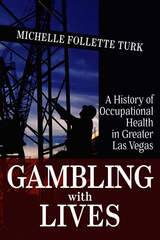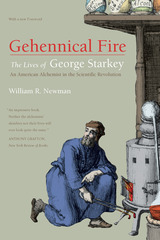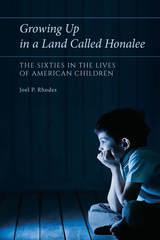4 start with G start with G

Gambling with Lives examines the work, hazards, and health and safety programs from the early building of the railroad through the construction of the Hoover Dam, chemical manufacturing during World War II, nuclear testing, and dense megaresort construction on the Las Vegas Strip. In doing so, this comprehensive chronicle reveals the long and unfortunate history of exposing workers, residents, tourists, and the environment to dangerous work—all while exposing the present and future to crises in the region. Complex interactions and beliefs among the actors involved are emphasized, as well as how the medical community interpreted and responded to the risks posed.
Updated through 2020, this second edition includes new and expanded discussions on:
- Union activity, sexual harassment and misconduct, and race and employment
- The change to Las Vegas’ “What happens here, stays here” slogan
- The MGM Grand Fire and 1918 influenza pandemic
- Work-related musculoskeletal disorders in the service industry
- Legionnaire’s Disease outbreaks at resorts
- Effects of the Route 91 Harvest Festival Shooting
- The COVID-19 pandemic


Reputed to have performed miraculous feats in New England—restoring the hair and teeth to an aged lady, bringing a withered peach tree to fruit—Eirenaeus Philalethes was also rumored to be an adept possessor of the alchemical philosophers’ stone. That the man was merely a mythical creation didn’t diminish his reputation a whit—his writings were spectacularly successful, read by Leibniz, esteemed by Newton and Boyle, voraciously consumed by countless readers. Gehennical Fire is the story of the man behind the myth, George Starkey.
Though virtually unknown today and little noted in history, Starkey was America’s most widely read and celebrated scientist before Benjamin Franklin. Born in Bermuda, he received his A.B. from Harvard in 1646 and four years later emigrated to London, where he quickly gained prominence as a “chymist.” Thanks in large part to the scholarly detective work of William Newman, we now know that this is only a small part of an extraordinary story, that in fact George Starkey led two lives. Not content simply to publish his alchemical works under the name Eirenaeus Philalethes, “A Peaceful Lover of Truth,” Starkey spread elaborate tales about his alter ego, in effect giving him a life of his own.

Because the preadolescent years are, according to the child development researchers, the most formative, Joel P. Rhodes focuses on the cohort born between 1956 and 1970 who have never been quantitatively defined as a generation, but whose preadolescent world was nonetheless quite distinct from that of the “baby boomers.” Rhodes examines how this group understood the historical forces of the 1960s as children, and how they made meaning of these forces based on their developmental age. He is concerned not only with the immediate imprint of the 1960s on their young lives, but with how their perspective on the era influenced them as adults.
READERS
Browse our collection.
PUBLISHERS
See BiblioVault's publisher services.
STUDENT SERVICES
Files for college accessibility offices.
UChicago Accessibility Resources
home | accessibility | search | about | contact us
BiblioVault ® 2001 - 2024
The University of Chicago Press









